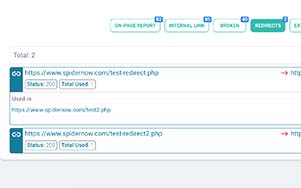Let's talk about something that can be a real headache for website owners: HTTPS setup errors. Now, I know what you're thinking—HTTPS sounds like a bunch of technical mumbo jumbo, but trust me, it's actually pretty important. HTTPS is a protocol for secure communication over the internet, and it's becoming increasingly important for protecting the privacy and security of your website visitors.
But here's the thing: setting up HTTPS on your website isn't always smooth sailing. In fact, there are plenty of common errors that can trip you up along the way. Let's take a look at a few of the most common ones:
1. Mixed content errors: This occurs when your website contains a mix of HTTP and HTTPS content. This can happen if you've updated your website to use HTTPS but still have links or resources that are being loaded over HTTP. Not only does this pose a security risk, but it can also result in warnings or errors for your visitors.
2. SSL certificate errors: Your website needs to have a valid SSL certificate installed in order to use HTTPS. If your SSL certificate isn't configured correctly or has expired, visitors to your site may see scary warning messages telling them that your site isn't secure.
3. Redirect errors: When you set up HTTPS on your website, you need to make sure that all HTTP traffic is redirected to HTTPS. If this isn't done properly, visitors may be able to access your site over both HTTP and HTTPS, which can cause confusion and security issues.
4. Mixed canonicalization errors: This occurs when your website serves different versions of the same page over HTTP and HTTPS. Search engines may see this as duplicate content, which can harm your site's search engine rankings.
Dealing with HTTPS setup errors can be frustrating, but fortunately, there are plenty of resources available to help you troubleshoot and fix them. Online forums, documentation, and tutorials can provide valuable insights and guidance, and many web hosting providers offer support for setting up HTTPS on your website.
So if you're struggling with HTTPS setup errors, don't panic. Take a deep breath, roll up your sleeves, and dive into the problem. With a little patience and persistence, you can get your website up and running securely in no time.
How do HTTPS setup errors impact website analytics?
HTTPS setup errors can negatively impact website analytics by affecting the accuracy of tracking data and user behavior analysis. Errors such as mixed content or insecure connections may prevent certain resources from loading properly, leading to discrepancies in page views, session durations, and conversion tracking. Additionally, security warnings displayed to users due to HTTPS errors can result in increased bounce rates and reduced user engagement.
Common HTTPS Setup Errors
While setting up HTTPS, there are several common errors that website owners may encounter. Understanding these errors can help troubleshoot and resolve them effectively.
1. Mixed Content: This error occurs when a website served over HTTPS contains resources, such as images, scripts, or stylesheets, that are loaded over HTTP. Browsers may block these resources, resulting in a broken or insecure website. To fix this error, ensure that all resources are loaded securely over HTTPS.
2. SSL/TLS Certificate Errors: Certificate errors can occur if the SSL/TLS certificate is expired, invalid, or not properly installed. Common certificate errors include 'Invalid Certificate', 'Certificate Expired', and 'Certificate Not Trusted'. To resolve these errors, renew or install a valid SSL/TLS certificate from a trusted certificate authority.
3. Redirect Loops: Redirect loops happen when a website redirects from HTTP to HTTPS and then back to HTTP in an infinite loop. This can occur due to misconfigured redirects or conflicting rules in the server configuration. To fix this error, review the redirect configuration and ensure it correctly redirects to HTTPS without creating a loop.
4. Insecure Cipher Suites: Cipher suites determine the encryption algorithms used in the SSL/TLS handshake. Insecure cipher suites can expose the website to vulnerabilities and weak encryption. Ensure that the server is configured to use secure and up-to-date cipher suites to mitigate this error.
By familiarizing yourself with these common HTTPS setup errors, you can troubleshoot and resolve them promptly, ensuring a secure and seamless browsing experience for your website visitors.
Troubleshooting Techniques for HTTPS Errors
When troubleshooting HTTPS errors, it is important to follow a systematic approach to identify and resolve the issues. Here are some techniques to help troubleshoot HTTPS errors:
1. Check SSL/TLS Certificate: Verify that the SSL/TLS certificate is valid and properly installed. Use online certificate validation tools to check for any errors or warnings.
2. Review Server Configuration: Ensure that the server configuration is correctly set up to handle HTTPS requests. Check for any misconfigured redirects or conflicting rules.
3. Examine Browser Console: Use the browser console to inspect any error messages related to HTTPS. This can provide valuable insights into the cause of the error.
4. Debug SSL/TLS Handshake: Use command-line tools or online SSL/TLS handshake analyzers to debug the handshake process and identify any issues or misconfigurations.
5. Consult Documentation and Support: Refer to the documentation provided by your web server or SSL/TLS certificate provider for specific troubleshooting steps. If needed, reach out to their support for assistance.
By following these troubleshooting techniques, you can effectively diagnose and resolve HTTPS errors, ensuring a secure and reliable website.










